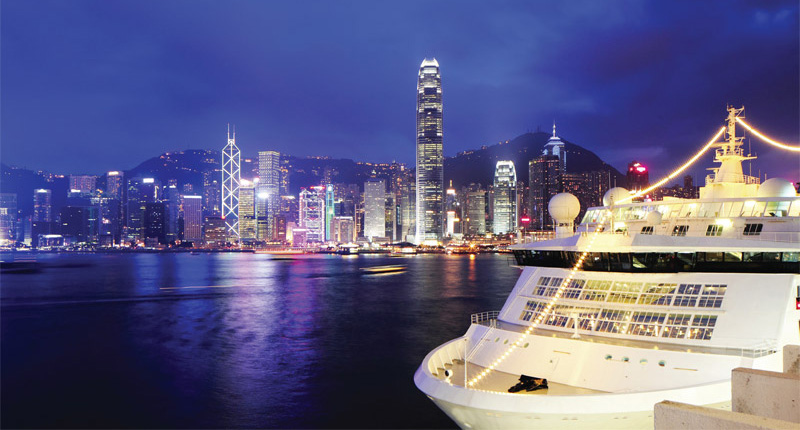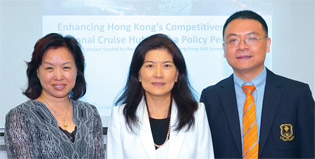
PolyU study offers a comprehensive overview of the way forward for the cruise industry in Hong Kong.
Hong Kong's cruise industry has experienced stable growth over the last two decades, with an annual average increase in passenger numbers of 7.2%. Yet there is ample room for further growth, especially with the number of mainland Chinese tourists taking cruises expected to surpass one million in 2015. While its strategic geographical position in the Asia-Pacific region has made Hong Kong a must-see destination for some cruise passengers, the city is facing fierce competition from neighbouring ports in Shenzhen and Guangzhou. Shanghai, Singapore, South Korea, Taiwan and Vietnam are also joining the cruise tourism business or expanding their existing port infrastructure.
There is thus a pressing need for the cruise industry in Hong Kong to develop a distinct competitive advantage. To address this scenario, a team spearheaded by Prof. Cathy Hsu, Chair Professor of PolyU's School of Hotel and Tourism Management, recently conducted a comprehensive study of what it would take for Hong Kong to become a competitive regional cruise hub. Employing rigorous research methodologies, including interviews, focus groups and surveys, the study systematically analysed supply and demand factors, and drew implications for formulating cruise tourism-related policies.
"This study provides important information for the Hong Kong government to formulate strategic plans and draw policy implications to support the development of Hong Kong's cruise industry," said Prof. Hsu.
The recommendations took into account the demand, supply and cross-community relations. On the demand side, the team suggested marketing to a three-hour radius region, increasing mainland residents' awareness of short- and long-haul itineraries, and increasing Hong Kong residents' interest in cruise holidays. On the supply side, it advised the need to promote Hong Kong and attract more cruise ships, the practical necessity of enhancing transportation to and from the Kai Tak Cruise Terminal, encouraging onboard immigration clearance and initiating cross-governmental agency collaboration. Also, numerous modes of cross-community collaboration were recommended, such as regional collaboration to avoid duplicate offerings, arranging special visas for cruise passengers and the establishment of a cruise trade association, along with cruise research and education. ♦

